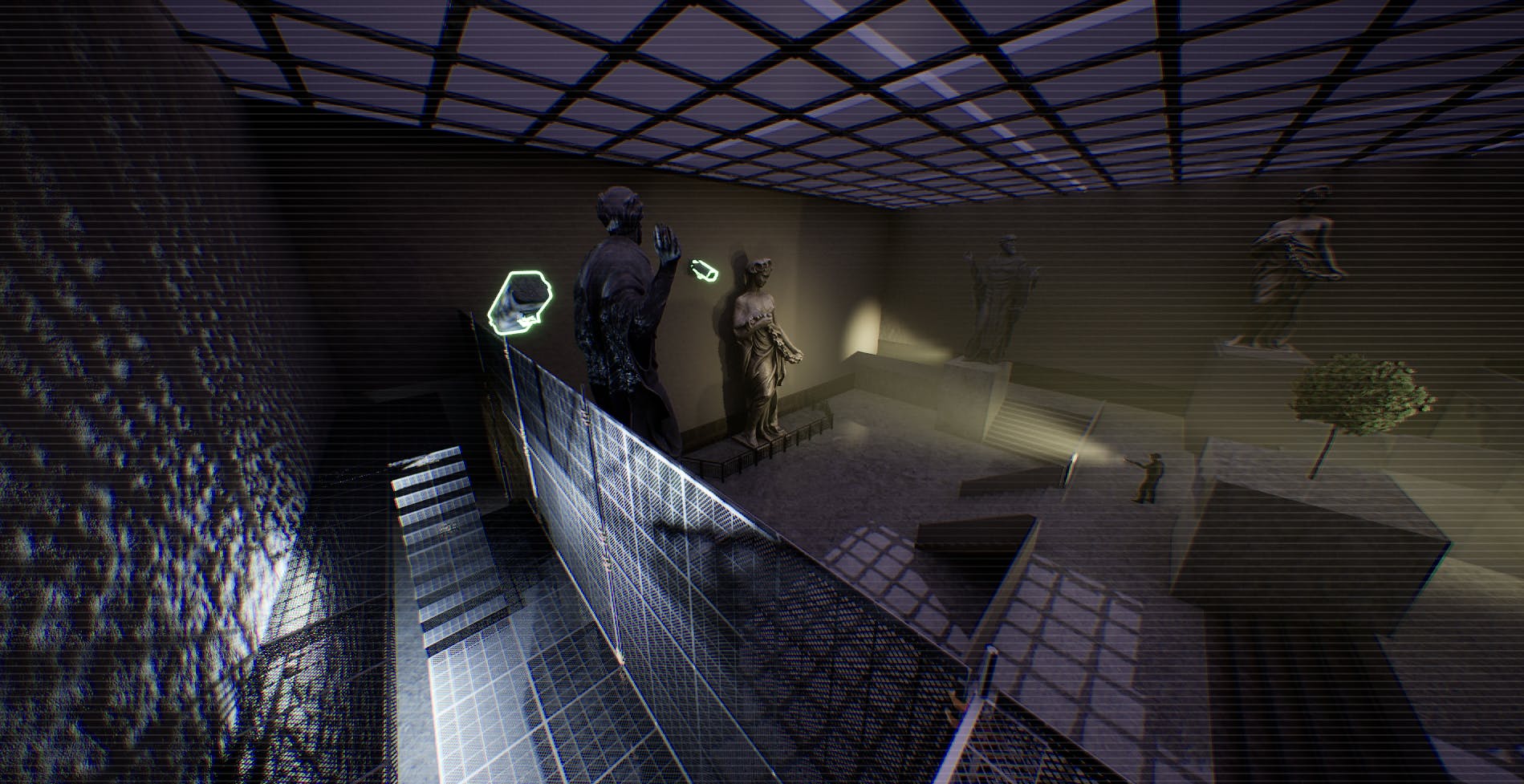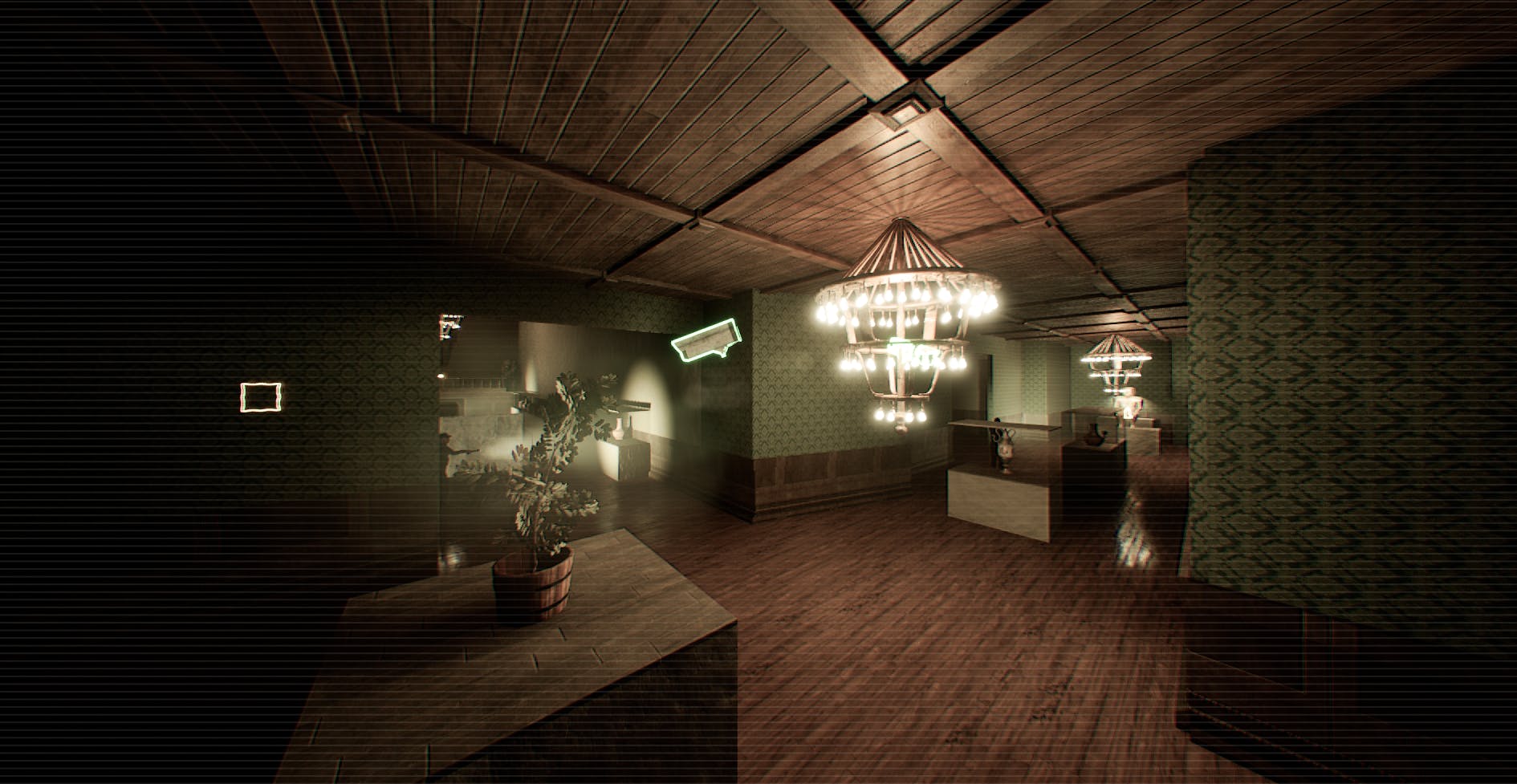(Not So Super) Super Spy!(Not So Super) Super Spy!
- Team size:
12
- Role:
Level Designer
- Itch.io Link:
https://futuregames.itch.io/not-so-super-super-spy
- Development time:
5 Weeks (Part time)
Details
Overview
Concept
Play as Robin, a blind relic hunter and their hacker assistant Theia. Who’re on a mission to take back ancient relics from a greedy antique collector. Sneak through the environment as Robin, without getting caught. Watch his movements through the security cameras as Theia and assist Robin by distracting guards. Play as two sides of the same coin and take back the stolen artifacts to their country of origin!
Contribution
-Gym/test level
-Level blockout
-Environment art implementation
My approach
While working on this project alongside my part-time role at Hazelight, I carefully managed the scope to align with both my schedule and our project goals, ensuring the delivery of a polished gameplay experience for our players.
Additionally, the absence of dedicated artists posed a significant challenge. To address this, I was responsible for finding assets and implementing the art for my level, in addition to handling level design and blockout tasks.
Pre production

My level was supposed to be in a museum, so I started looking at references and topologies from museums. I realized that it's very rare for museums to have tight corridors, and all of the rooms are usually next to each other with many different doors. I tried to apply these discoveries to my 2d map.

I quickly made a Gym testing ground for my coworkers to test mechanics and set other metrics.
The process
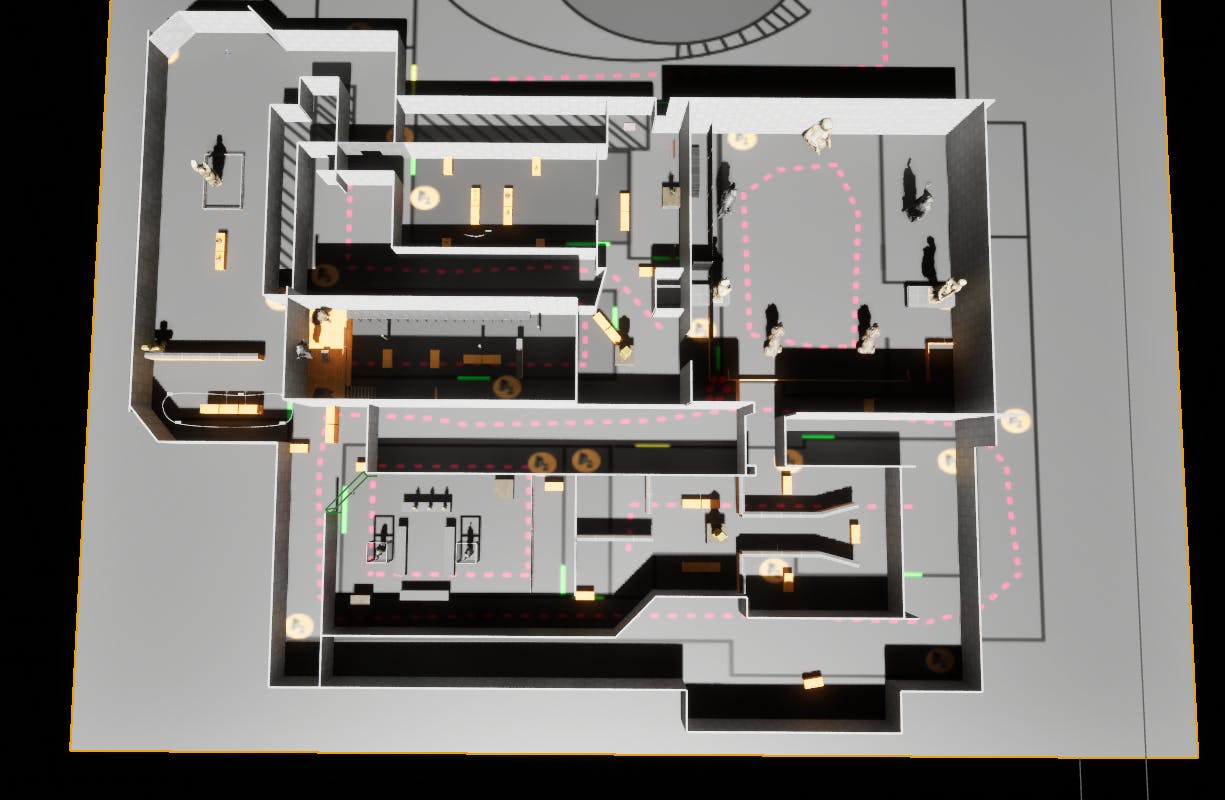
I imported the 2d map and started building from it with modular pieces from the "Blockout Starter Pack." This was the first time I used this technique to start blocking out, and it turned out to be very time-efficient. It didn't take long until I had the basic layout finished.
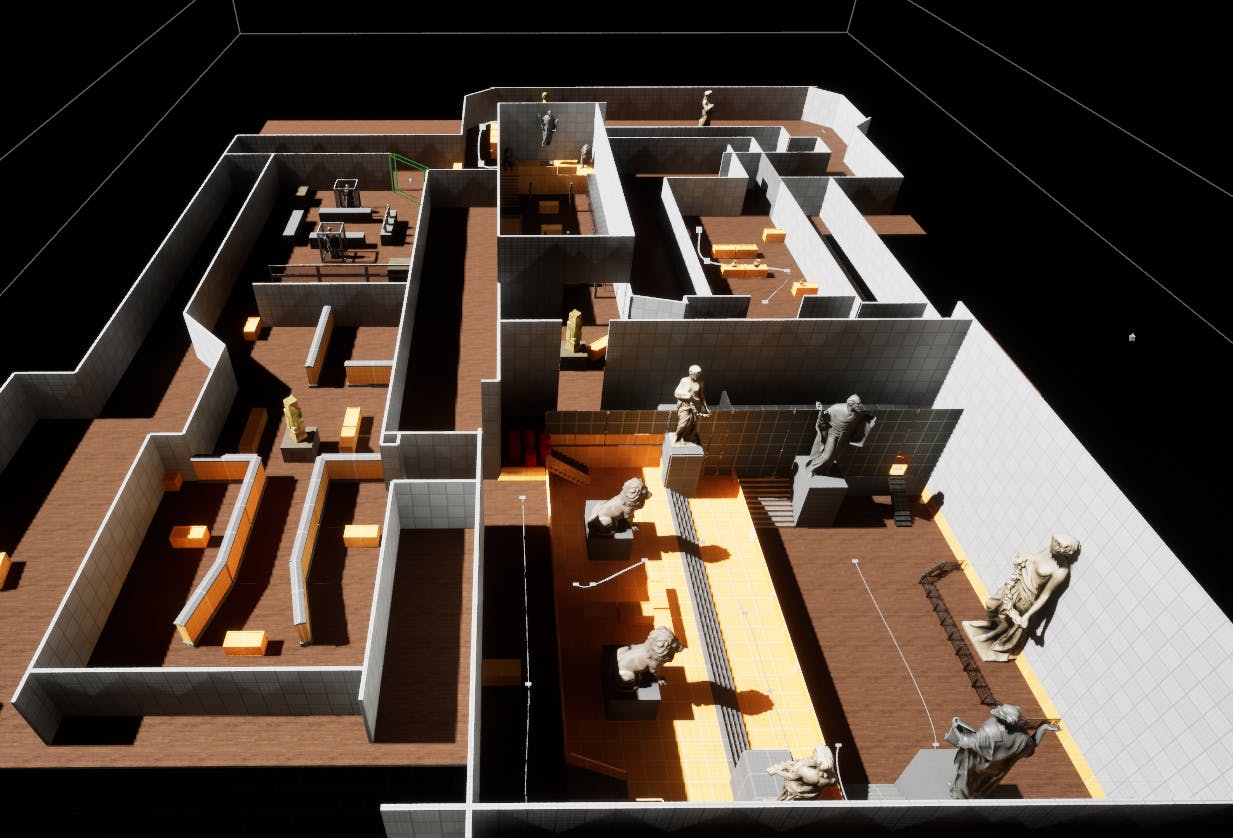
I placed the character in the level and quickly realized that my 2D map was far too large. The scale felt right, but it didn’t match my intended scope. I wanted at least one larger room to contrast with the smaller ones and provide opportunities for verticality. So, I removed a significant portion of the level (almost half), expanded one room to make it much larger, and added verticality to that room.
Design

Multiple paths and why it was cut
I also had multiple paths on my first blockout. This didn't work for many reasons. Since we the players, had to receive a certain amount of treasures to win the level, players had to go back if they missed a treasure, which felt frustrating.

Improving layout for better flow and navigation
Instead of creating multiple paths, I added optional treasure that they could collect. These treasures were placed off the main path. With this layout, players had the choice to go after them if they were willing to take the risk, while those who had already collected enough could ignore them. This design minimized if not eliminated the need for backtracking.
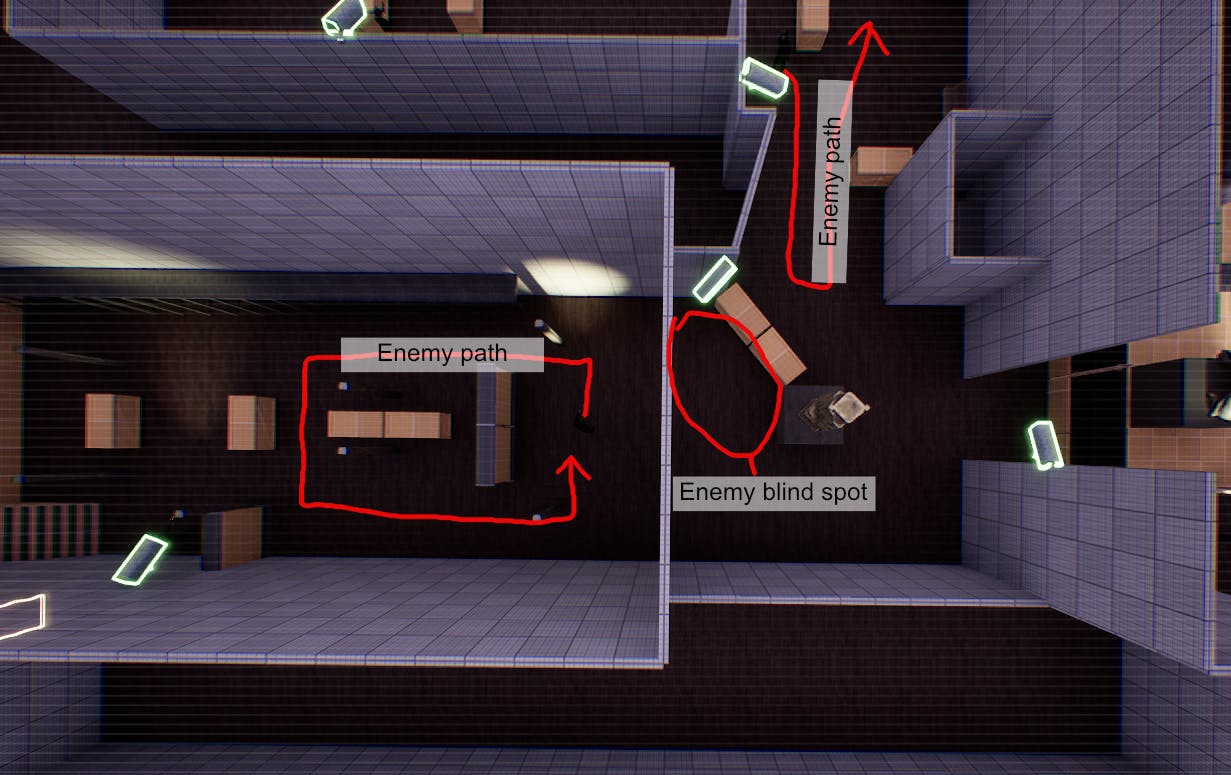
Creating safe zones
One of the game challenges was that a player should never go blindly into a new room since every room had enemies guarding it. I, therefore, placed an Enemy Blindspot before every room so the players could take their time to scout out the next room without getting caught and it felt frustrating.

Better Camera Design to reduce Blindspots
To make the camera system work, I needed to ensure that players could always see the next camera and return to the previous one. It was also crucial to eliminate any blind spots. Through playtesting, I noticed that many players became disoriented when the camera didn’t face them upon entering a new room. To fix this, I positioned the next camera on the opposite side of the room, facing the entrance. This provided players with an overview of the room while still allowing them to see their character.
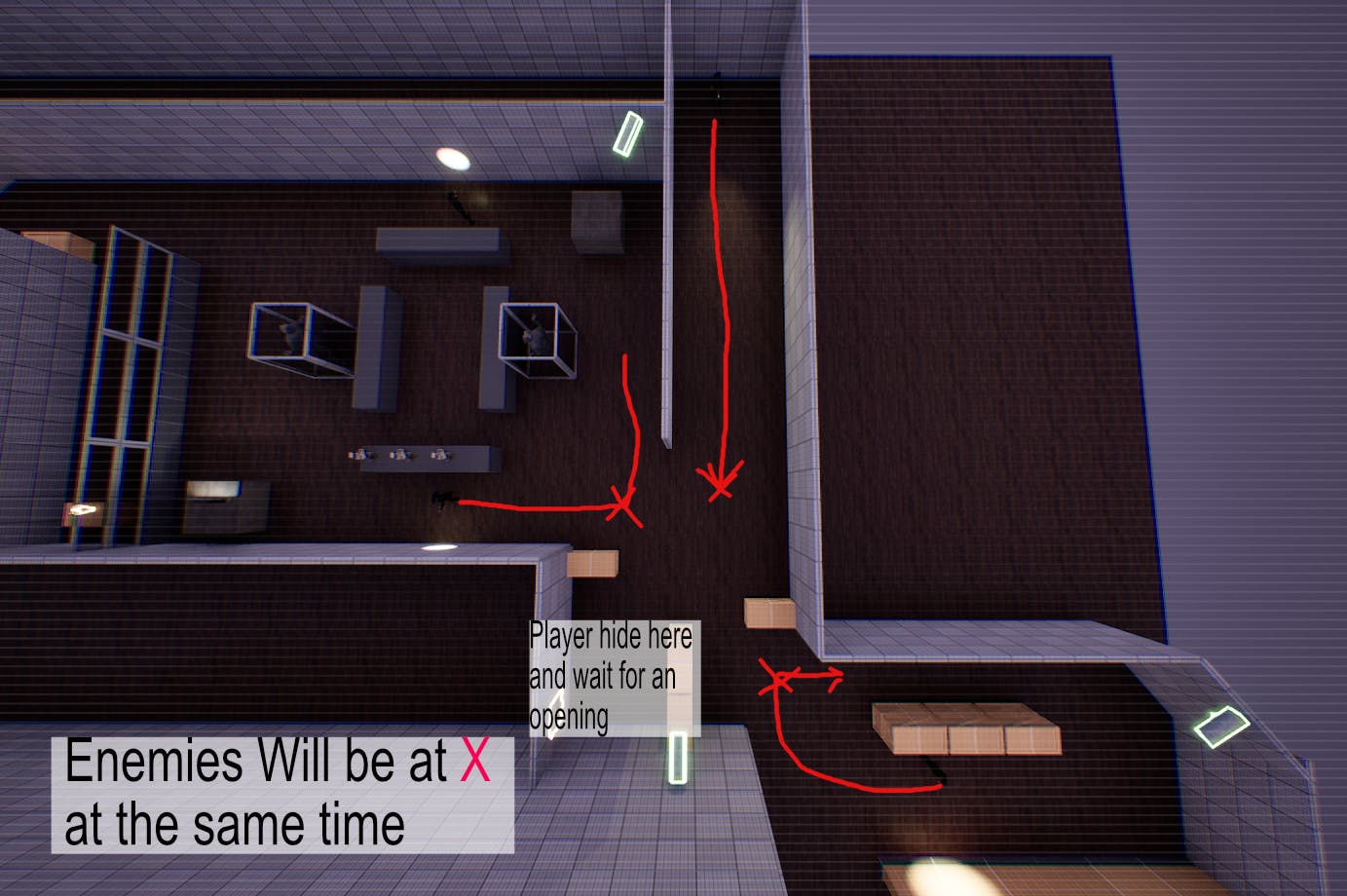
Create tension with enemies placement
I didn't want to place enemies in the scene randomly. I made sure that they always covered the entire room. To create tension I made sure that enemies would sandwich the player. Which is usually not a good term but in this game it worked perfectly.
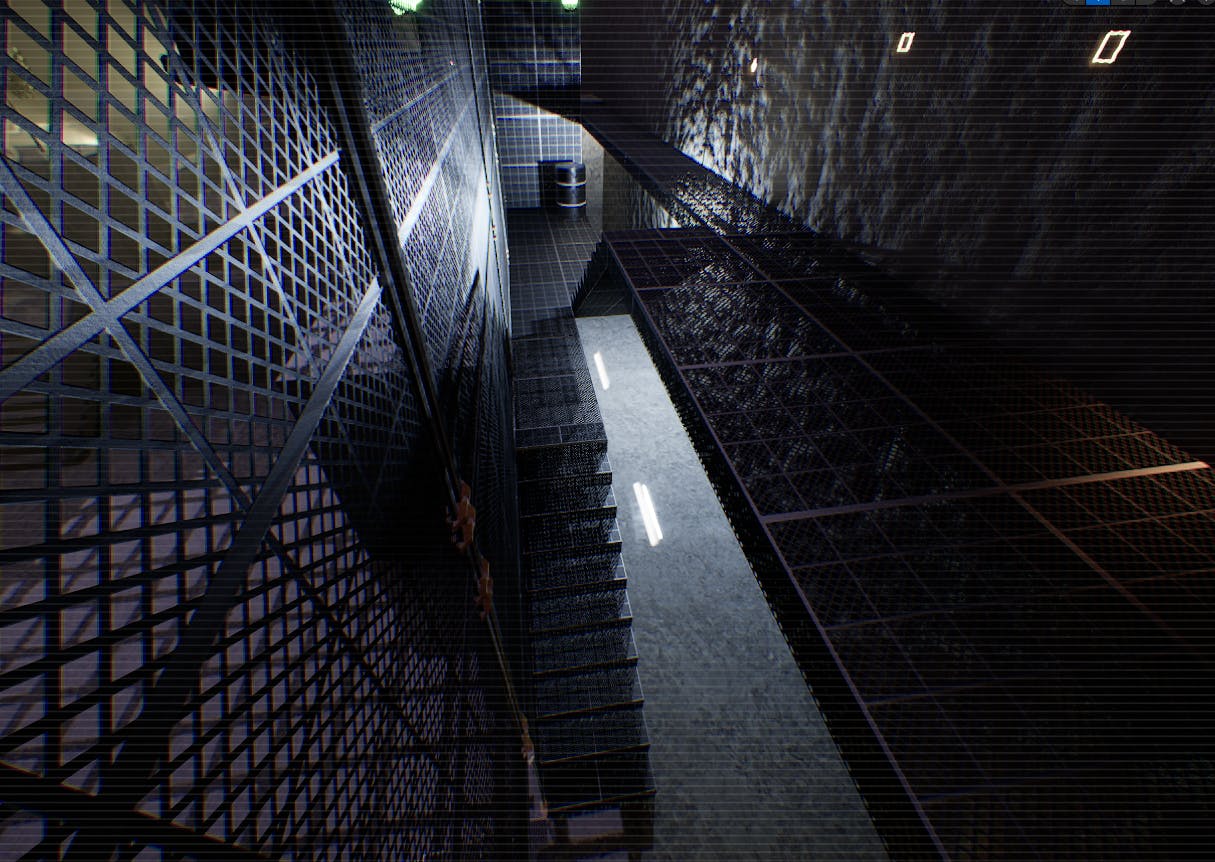
The scaffolding section
I wanted to mix up the blockout and add more variation. So I made a scaffolding section. I intended to have an enemy patrolling the section and the player had to hide under the stairs to proceed. Creating a cool moment of the enemy walking above the player
The problem was that I had far too little space to work with. Making the platforms wider looked strange, so the player had to walk on a thin platform, which didn’t really align with the 3Cs. Another issue was the camera—it was tricky to cover the entire area without overwhelming the player with too many cameras. Unfortunately, the result felt clunky. However, I’m still glad I experimented, as it was a valuable learning experience.
What would I have done differently today
I am happy that I got some verticality in the level, I did realize how time-consuming it can be, and I am still happy that I added it to the level but for future projects, I will analyze the situation further and ask these questions:
Do we need verticality?
Why do we need verticality?
Does it work well with the gameplay?
Looking back
Considering I had very limited time, I am very happy with my output. Some sections of the level didn't come out perfectly. What I am really happy about is the art Implementation. When I had the blockout finished I was very uncertain how to approach implementing the art. It wasn't easy and I made sure that I had enough time for it. but I am very happy with the results. And that I managed to bring some variation to the different rooms.
